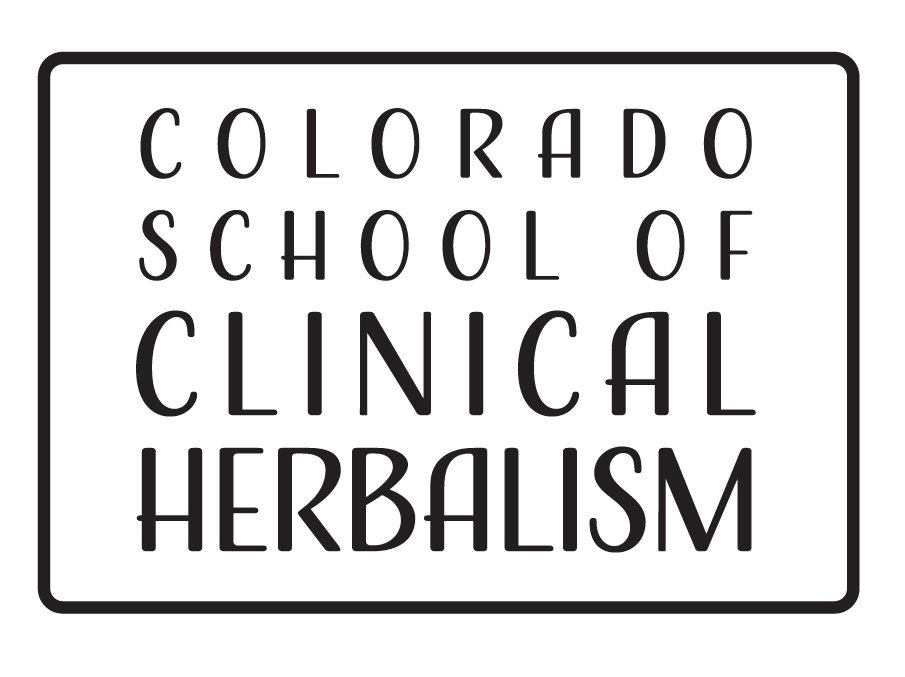By: Elise Weber, CCH
In our current culture, the word “trauma” holds significant meaning for many people, frequently emerging in conversations about mental, emotional, and physical health. As herbalists and holistic practitioners, our understanding of trauma goes beyond the immediate experience; it delves into the intricate connections between the mind, body, and spirit. Here, we will explore the nature of trauma, its effects on health, and how herbal remedies and holistic practices can support healing and resilience.
What is Trauma?
To put it simply, trauma is a physiological response to overwhelming events. Our body and mind create these responses as safeguards, ensuring that we only process what we are capable of handling in the present moment (McEwen & Stellar, 1993). It is crucial to understand that trauma is not inherently found in the event itself but is stored within our nervous system (Felitti et al., 1998). This means that trauma can persist long after the initial event has passed, causing lasting dysregulation in nervous system responses. Factors such as chronic stress, adverse experiences, and common societal issues like racism, sexism, ableism, and classism can heighten the risk of developing trauma.
Imagine a cup that represents our capacity to handle stress. When this cup is already full or almost full due to ongoing stressors, any additional overwhelming experiences are likely to overflow our cup. This overflow manifests in our lives as various symptoms; emotional dysregulation, anxiety, depression, and even physical health issues, including chronic illness (Lyon, I. (2020, January 29). There are several practices we can integrate into our daily lives to ensure we are not navigating our journeys already at capacity. These vitalist practices can be simple yet lead to significant transformations in our lives. Some examples include meditation, breathwork, engaging with the natural environment, consuming a nutrient-rich diet, and fostering connections within our community.
So, How Does This Relate to Me and My Community?
The impact of trauma is profound and multifaceted. As herbalists, we stay within our scope and focus on the physical and sometimes emotional manifestations of trauma. Physically, trauma can manifest in many ways. Digestive problems, chronic pain, weakened immune response, blood sugar dysregulation, and compromised hormone function are just some of the clinical patterns we see emerge for individuals who haveexperienced acute or ongoing trauma. This brings us to the important discussion of the mind-body connection.
Research has shown that our mental and emotional states directly influence our physical health. For instance, the phenomenon of “gut feelings” is not merely a metaphor; our gut health is intricately connected to our emotional well-being. Adverse Childhood Experiences (ACEs) have been linked to long-term health consequences, emphasizing the importance of addressing trauma early in life (Felitti et al., 1998). Studies show that higher ACE scores correlate with increased risks for a range of health issues, including cardiovascular diseases and autoimmune disorders (McEwen & Stellar, 1993).
Herbal Supports and Vitalist Practices
As herbalists, we recognize the potential of plants to help restore balance in the body and promote emotional resilience. Certain herbs have been traditionally used to support individuals dealing with trauma and stress. Adaptogens have varying interactions in the body; when used appropriately, they can help the body adapt to stress and bolster emotional resilience. (Kahn, A. (2021) Calming adaptogens like Tulsi and Schisandra are appropriate choices for those who are often activated or seemingly stuck in their sympathetic nervous system—commonly known as fight or flight. Because everyone experiences trauma differently, some may find they tend to “freeze” in stressful or traumatic situations. This state engages a completely different branch of the nervous system and occurs when the individual knows that fight or flight are not an option, as in cases of early childhood adverse experiences. Dissociation, immobility, and numbness are commonly reported in these cases. When in this state, more stimulating adaptogens like Ashwagandha and Rhodiola may be appropriate. (Kahn, A. (2021).
When working with clients, it is essential to consider their unique histories and individual responses. Each person may require different dosages and herbal combinations, underscoring the need for personalized approaches. Additionally, developing awareness of our nervous system plays a crucial role in trauma recovery. Techniques such as breathwork can be powerful tools for regulating physiological states; as Dr. Stephen Porges notes, “Breathing is a powerful portal to regulate physiological states” (Porges, 2011).
Building relationships with herbal allies is one way to foster a sense of community. When we broaden our understanding of community beyond conventional definitions, we can find connections in nature, animals, our environment, and our cherished plants. Developing a deep resonance with specific herbs can help bridge feelings of isolation, acommon experience for those who have endured trauma. I encourage everyone to start cultivating relationships with herbal allies; here are a few to consider:
Skullcap: Skullcap nourishes and builds our nerves, easing the effects of chronic stress on our nervous system, and helps move tension stored in our bodies. It builds, relaxes, and encourages flow.
Albezia: Commonly referred to as the herb of happiness, Albezia supports mood during times of anxiety, distress, and depression.
Lavender: Lavender aids in addressing hormone-related nervous system imbalances and helps to reduce irritability. Its calming effects on the nervous system make it a useful hypotensive, promoting relaxation and alleviating exhaustion.
Tulsi: As a warming nervine, Tulsi enhances circulation, digestion, and blood sugar regulation. Additionally, it functions as an adaptogen, helping the body adapt to various stressors.
Schisandra: Schisandra is a mild adaptogen that can bolster the body’s resilience. This centering herb aids in clarifying our awareness.
Wood Betony: Wood Betony is a powerful yet subtle nervine that assists in the “digestion” and assimilation of all aspects of the self.
Saint John’s Wort: Saint John’s Wort (SJW) is a relaxing nervine renowned for its ability to soothe anxiety and tension while uplifting the spirit. This remarkable herb has been used throughout history for various purposes, proving to be a valuable ally for those experiencing depression, anxiety, menstrual irregularities, and gastrointestinal issues such as diarrhea.
Milky Oats: Avena is a premier long-term nervine tonic, effective for nervous exhaustion and atonic states. As a first-degree herb, it serves as an excellent nervine trophorestorative without causing overstimulation or overtonification. It is particularly beneficial in addressing depleted or deficient conditions of the nervous system, often resulting from prolonged stress, overwork, recovery from long illnesses, or emotional exhaustion.
Community Support and Collective Healing
Trauma is not just an individual experience; it often affects entire communities. As herbalists, we have a unique opportunity to foster community support and connection, which are vital in healing from trauma. Workshops, and community herbal clinics and projects can create spaces for individuals to share their experiences and learn from one another. These collective healing strategies can help break the isolation that often accompanies trauma (Van Der Kolk, 2014).
Additionally, understanding and addressing collective trauma is crucial. Many communities have shared experiences of trauma, whether due to historical injustices, systemic oppression, or natural disasters. Herbal practices can serve as a means of collective healing, offering communities ways to connect and nurture resilience.
Understanding trauma from a holistic herbalist perspective involves creating a compassionate framework recognizing its profound effects on individuals and communities. By integrating herbal remedies, trauma-informed care, and community support, we can create pathways toward healing and resilience. As we navigate the complexities of trauma, let’s remember the power of nurture, the importance of connection, and the resilience inherent in us all. Through these practices, we can foster a deeper understanding of ourselves and one another, paving the way for collective healing and well-being.
If you have any questions, contact Elise at elise.weber@clinicalherbalism.com
Sign up here:
https://www.eventbrite.com/e/trauma-awareness-tools-for-personal-collective-healing-with-elise-weber-tickets-1119557379259?aff=oddtdtcreator
References:
1. Felitti, V. J., Anda, R. F., Nordenberg, D., Williamson, D. F., Spitz, A. M., Edwards, V., & Koss, M. P. (1998). Relationship of Childhood Abuse and Household Dysfunction to Many of the Leading Causes of Death in Adults. American Journal of Preventive Medicine, 14(4), 245-258. doi:10.1016/S0749-3797(98)00017-82. Porges, S. W. (2011). The Polyvagal Theory: Neurophysiological Foundations of Emotions, Attachment, Communication, and Self-Regulation. W. W. Norton & Company.
3. Van Der Kolk, B. A. (2014). The Body Keeps the Score: Brain, Mind, and Body in the Healing of Trauma. Penguin Books.
4. McEwen, B. S., & Stellar, E. (1993). Stress and the Individual: Mechanisms Leading to Disease. Archives of Internal Medicine, 153(18), 2093-2101. doi:10.1001/archinte.153.18.2093
5. Lyon, I. (2020, January 29). Understanding the nervous system and trauma [Video].
YouTube.
Kahn, A. (2021). The Trauma-Informed Herbalist: A guide to herbalism and trauma-informed care. Self-published.

